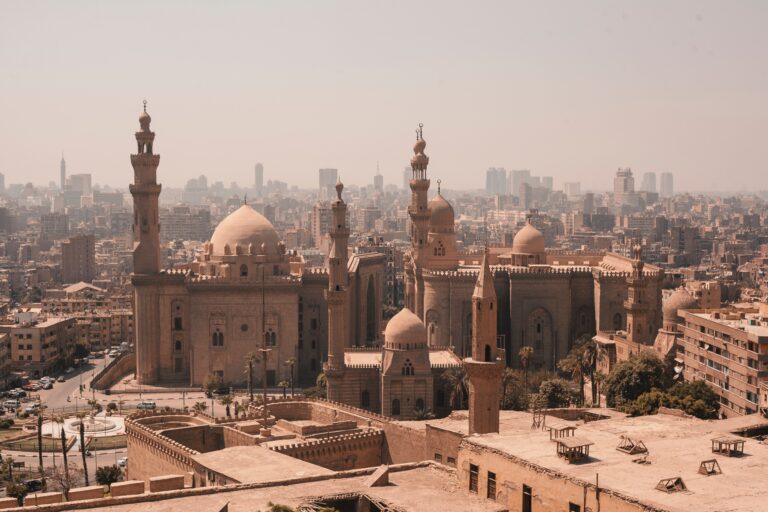Whether you’re planning a visit to Egypt or sending money to family and friends there, understanding the Egyptian pound (EGP) is essential. With a history dating back to the 19th century and designs reflecting Egypt’s ancient and modern heritage, the pound offers fascinating insights into the country’s culture.
Here’s everything you need to know about the Egyptian pound, including its denominations, history, and some fun facts.
Egyptian Pound Essentials
The Egyptian pound (EGP) is the official currency of Egypt, issued by the Central Bank of Egypt. It is divided into 100 piasters, also known as qirsh in Arabic. The currency symbol is E£, resembling the GBP symbol (£) but with a capital E.
Banknotes
- E£200, E£100, E£50, E£20, E£10, E£5, E£1
- 50 and 25 piasters
Coins
- E£1, 50, 25, and 10 piasters
A Short History of the Egyptian Pound
- 1834: Egypt introduced a bimetallic currency system with gold and silver coins, replacing local currencies.
- 1885: The country adopted the gold standard, establishing the pound as a stable and unified currency.
- 1898: The National Bank of Egypt was created, and the first banknotes were issued in 1899.
- 1914: Paper money became the standard, replacing gold and silver as the basis of the currency.
- 1968: The Central Bank of Egypt took over currency issuance and introduced new banknote designs to accommodate economic growth.
Understanding Exchange Rates for the Egyptian Pound
The Egyptian pound has seen various currency pegs over its history. Initially linked to the British pound, it was later pegged to the U.S. dollar before becoming a free-floating currency.
Tips for Currency Exchange
- Exchange Rates: Check the current rates before exchanging money to ensure you get the best value.
- Trusted Providers: Use banks or reputable exchange services to convert GBP to EGP.
- Cash Availability: Carry small denominations for day-to-day purchases, especially in rural areas.
Five Fascinating Facts About the Egyptian Pound
1. Banknote Size Reflects Value
Smaller denominations of banknotes are physically smaller in size, making it easy to distinguish between values.
2. Bilingual Designs
All Egyptian banknotes are bilingual, featuring Arabic on one side with Islamic architecture and English on the other with ancient Egyptian motifs, such as statues and temples.
3. Designs Highlight Egypt’s History
Coins and banknotes showcase Egypt’s rich heritage:
- E£1 Coin: Features Tutankhamun, one of Egypt’s most famous pharaohs.
- Other Coins: Highlight Cleopatra and the Pyramids of Giza, celebrating Egypt’s ancient rulers and landmarks.
4. Security Features Are Cutting-Edge
Since 1968, Egyptian banknotes have included advanced security features like metallic threads, colour-shifting inks, and watermarks to prevent counterfeiting.
5. Unique Nicknames for Egyptian Pound
Locals use slang terms for the Egyptian pound, including:
- Nekla: 2 milliemes
- Shelen: 5 piasters
- Bolbol: 1 pound
- Baku: E£1,000 (pack)
- Arnab: E£1,000,000 (rabbit)
- Feel: E£1,000,000,000 (elephant)
Visiting Egypt
Egypt’s attractions are world-renowned, offering something for every traveller:
- Ancient Wonders: Explore the Pyramids of Giza, the Sphinx, and treasures in Luxor.
- Natural Beauty: Dive into the Red Sea’s coral reefs, cruise along the Nile, or take a desert safari.
- Vibrant Cities: Cairo and Alexandria offer bustling streets, historic mosques, and a wealth of museums.
Sending Money to Egypt
For those sending money to Egypt, services like Remitly offer a secure, fast, and affordable solution. You can send funds directly to bank accounts or for cash pickup at trusted locations across the country.
With transparent pricing and competitive exchange rates, Remitly ensures your money reaches its destination reliably.
